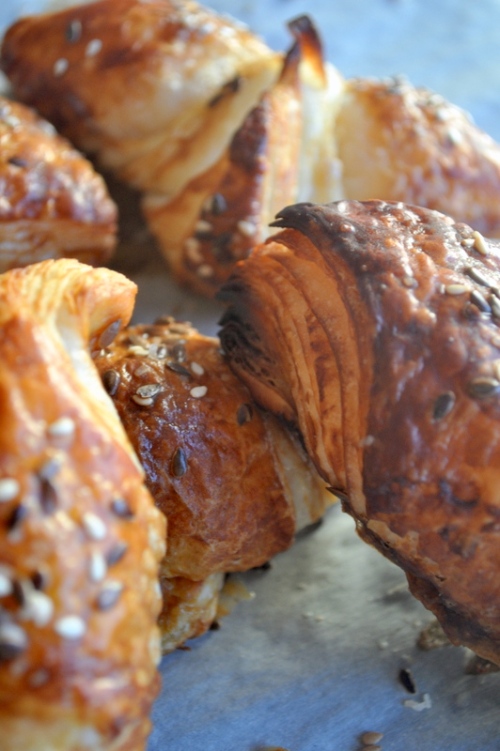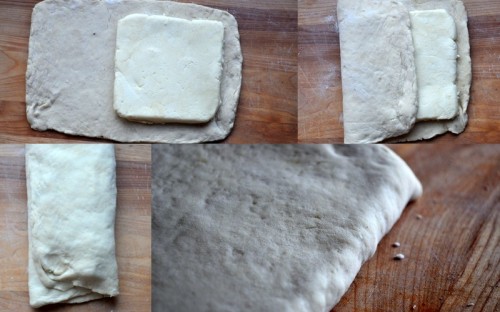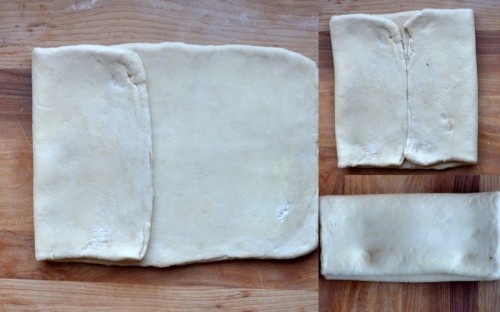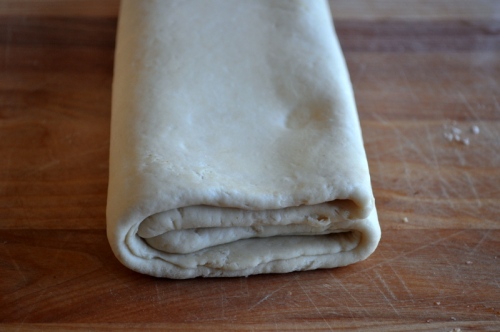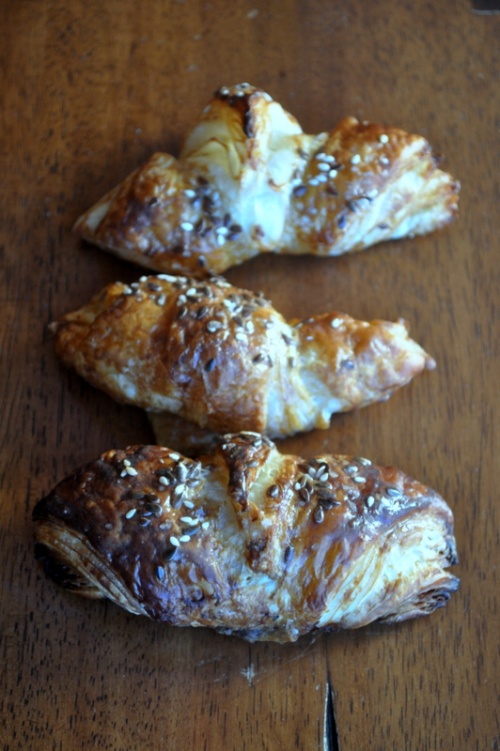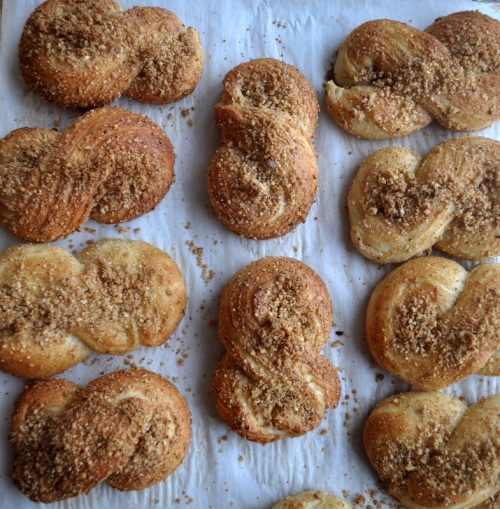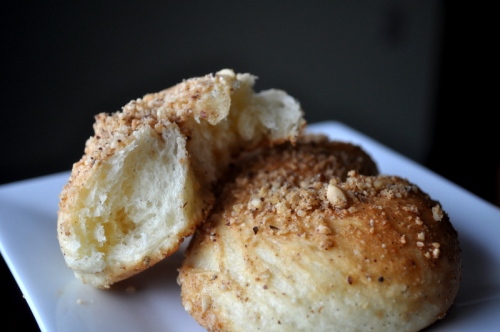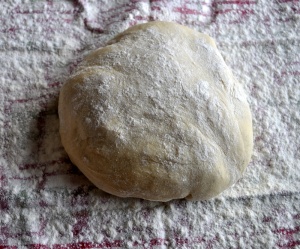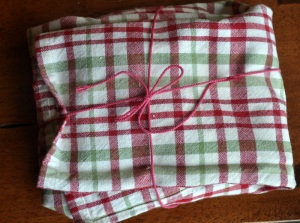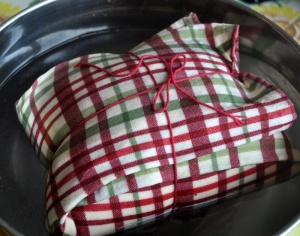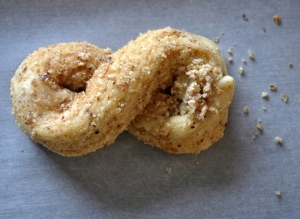Well, I’m late for posting the Bakers Challenge. Again. I love to volunteer at my daughters school and the past few weeks have been quite hectic with end of school field trips and activities. Please forgive me.
This month’s challenge was hosted by Shelley of C Mom Cook. She asked everyone to make cinnamon buns, or one its many variations. And there are tons. I think cinnamon rolls was one of the first breads that I ever made and there is something so comforting about rich, warm bread filled with sugary goodness and covered in more sugary goodness. If you have never tried making these (or some version of them), please don’t hesitate to try. It’s really quite simple.
The basic concept of a cinnamon roll is yeasted dough rolled out into a rectangular shape, then brushed with a good dose of butter. A cinnamon sugar mixture is then sprinkled over this and then the dough is rolled up and sliced. the slices are place, cut side up, in a pan to rise and then baked.
What is the difference between a “cinnamon” bun and a “sticky” bun? The first is drizzled with either a cream cheese or confectioners sugar glaze when still warm from the oven while a sticky bun has a butter/sugar mixture in the bottom of the pan that sliced dough gets placed into for their final rise. basically the extra sugary goodness goes in either before baking or after. In mine I did a little of both!
A variety of doughs can be used. An enriched dough is most common. All that means is that the dough has some butter and eggs in it. Sourdough is ultra tasty. Brioche dough is crazy wonderful for this (lots of added butter and eggs in the dough). Hell, let all thoughts of calories go out the window and use puff pastry. While this is more like a cronut it still counts as a cinnamon bun to me (and my thighs). Don’t let the thought of making bread dough frighten you. It is one of the most rewarding things you can do in the kitchen. That being said , I have at times used plain old white bread dough bought from the freezer section at the market and made sticky buns with delicious results. Seriously, all paths lead to the same end. Deliciousness.
I baked a few versions this month. First I went with one with a filling of cinnamon, candied orange peel and walnuts. I know my friend Kathy is cringing right now at the thought of candied orange peel but I love it. Later in the month I made little mini cinnamon buns for the volunteer appreciation night at the grade school. For these I just made a half batch of dough and rolled a skinnier rectangle so that when I rolled it up it only rolled 1 1/2 turns and then I cut 1/3 inch slices. I hope that makes sense. These were good and went quickly due to their manageable size. Nobody wants to be at a school gathering trying to eat a mammoth sized pastry in front of strangers. That is something better left for home.
For my final version I went with a rhubarb and custard filled sticky bun. My rhubarb plant outside is gigantic and I need reasons to use it. I used Bird’s custard after reading in a food history book about how Birds came about. It turns out that during WWII families in England were rationed one (yes, 1) egg per week so the manufacturers came up with a product that required no eggs and very little sugar, which was rationed as well. Since I keep a can in the closet for when the urge to make Nanaimo bars strike, this seemed perfect. Well, actually, I used the last of my eggs to make the dough and didn’t feel like going out to get some more….
The best part about making cinnamon/sticky buns? other than eating them, is that you can prepare them the day before and slip the pan of unrisen slices in the fridge until morning. You just wake up, turn your oven on, and let the cold rolls warm up a bit on the counter while your oven heats up. I find that even 15 minutes at room temperature is enough before popping them into the oven.
Please make sure to visit Shelley’s site to see her tasty versions. BAKE ON!
Dough
3 ¼ to 3 ½ cups all-purpose flour
2 tbsp sugar
2 ¼ tsp instant yeast (if using active dry yeast make sure to proof it first)
½ tsp salt
1 cup of milk, heated to just around 100F (I used 2%)
2 large eggs, at room temperature
1 tsp vanilla extract
½ cup unsalted butter, at room temperature
Stir three cups of the flour, sugar, yeast, and salt in a stand mixer fitted with the dough hook or in a large mixing bowl.
Add the milk, eggs ,vanilla and butter to the dry ingredients and continue mixing until the dough comes together. If necessary, add the remaining flour, a little at a time, until the dough is smooth and not sticky to the sides of the bowl. Continue to knead for about 5 minutes.
Place the dough into a lightly greased bowl and cover with cling wrap or a tea towel until it has doubled in bulk. This should take about hour. If it is very hot in your house this might be shorter or if your house is cool it could take a little longer.
Meanwhile, prepare the filling.
Rhubarb:
Take 4-5 stalks of fresh rhubarb and cut them into 1/4 – 1/3 inch slices. Add 1/2 cup sugar (or more to taste) . Mix this together and let it macerate until ready to use.
Custard:
1 1/2 Tablespoons (22 ml) Bird’s custard powder
1 1/2 Tablespoons (22ml) granulated sugar
1 cup (250ml) milk
1/2 vanilla bean, seeds scraped out (save the pod for your sugar or salt jar) or 1 teaspoon rum
In a small saucepan, mix together the custard powder and the sugar. Over medium high heat, whisk in the milk until well blended. If using the seeds of a vanilla bean, add it now. Bring to a full boil, whisking frequently. Take off the heat. If using rum, add now. Place the hot custard into a bowl and place a piece if cling wrap directly onto the surface to prevent a “skin” forming. Cool in the fridge while the dough is rising.
Get your pan ready:
In a 12 hole muffin tin, place 1/2 teaspoon each of butter and brown sugar. Place in a warm oven for a few minutes to slightly melt the two.
Set aside .
Assembly:
Roll out your dough onto a lightly floured surface. Make a rectangle roughly 12 x 9 inches. Feel free to eyeball this. Spread a layer of cooled custard over the dough leaving about 1/2 inch border all the way around.
Lightly drain your rhubarb, reserving the pink liquid for your glaze (optional)
Sprinkle the rhubarb over the entire surface . With the wide end facing you, start rolling up your dough, jelly roll style. Pinch the seam together and slice into Twelve 1 1/2 inch slices. Place cut side up into each muffin cup.
Cover with cling wrap and place in the fridge overnight until morning.
When you are ready to bake, take the cold pan out of the fridge and place on the counter. Remove the cling wrap. Heat your oven to 350F. After about 15 minutes, pop the sticky buns into your oven and bake for 25 minutes or until golden brown.
If you are baking the same day: after placing the sliced rolls into your muffin tin, cover them with either plastic wrap or a tea towel and let them rise again for another hour before baking at 350F for 25 minutes.
If you don’t have a muffin tin, place them into a rectangle or round cake pan with a little space around them to expand.
Optional glaze:(since my daughter was having a friend sleepover this was not optional in out house)
Take 1 1/2 cups confectioners sugar and mix with 2 tablespoons of the reserved pink rhubarb syrup. If it is too thick, add a tiny bit more until you get a consistency of thick cream. When the sticky buns come out of the oven, take them out of the pan and drizzle the pink icing of each of them.
This easy dough recipe is from Anna Olsen.
.



























